1lumen selects and reviews products personally. We may earn affiliate commissions through our links, which help support our testing.
MicroFire Falcon H8 review
Table of contents
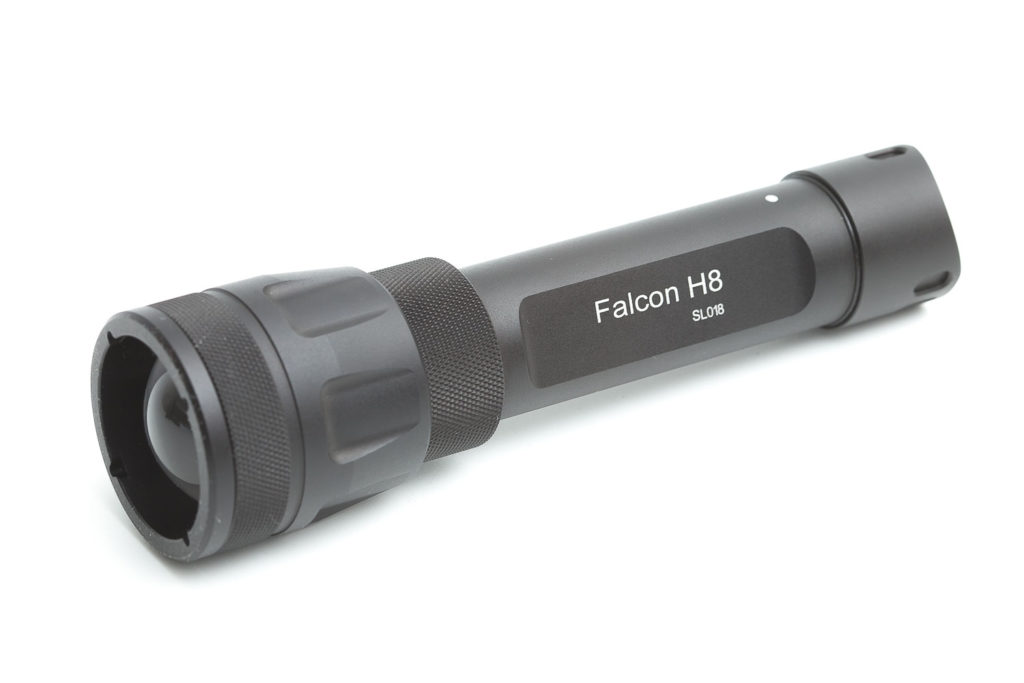
Specifications
| Brand/model | MicroFire Falcon H8 |
|---|---|
| LED | N/A (Likely Osram W1) |
| Lumens | N/A |
| Beam intensity | 202,500 cd |
| Battery config. | 1*18650 |
| Material | Aluminum |
| Modes | 2+ramping |
| Blinkies | Strobe |
| Reflector | Convex lens system |
| Waterproof | IP68 |
| Review date | December 2020 |
INTRODUCTION:
My MicroFire H8 was included in the MicroFire Excalibur H20 box. This means that the flashlight is missing the ‘regular’ accessories that would go with the H8.
MicroFire is a brand dedicated to long range flashlights, including some extremely far reaching lights like the Optispike S50, which is able to reach 5.5 kilometers and a beam intensity of 7.6 million candela.
The H8 is a much smaller flashlight with a focus-able beam. This means that you can adjust the width of the beam by twisting its head. After reviewing the H20, it’s time to see if the H8 can live up to its specifications.
Package quality.
Like I said, the flashlight didn’t come with all the accessories, but I will post the ‘regular’ accessories here:
- The flashlight: MicroFire H8
- Rechargeable battery
- A1 charger
- Nylon holster
- Spare O-rings
- Manual
Handling of the light
Without the included holster, you can still carry it in your (larger) pockets without damaging them. The body of the flashlight has 2 flat parts with the brand and model printed on them. Although the main parts of the body have no knurling, it doesn’t feel too slippery.
The light does have 2 parts with knurling. 1 just below the bezel for twisting the head, and on on the body, just below the head. Focusing the beam by twisting the head is even possible 1-handed. There is no lanyard attachment, however.
The switch itself is an electric switch located at the rear end. The tailcap has 2 cutouts to rest your thumb, but it’s almost impossible to activate the switch holding it in a tactical position. You have to use the tip of your thumb to press the switch. Using your index finger is even easier because the switch is pretty small. This could be a con for people with ‘large’ fingers.
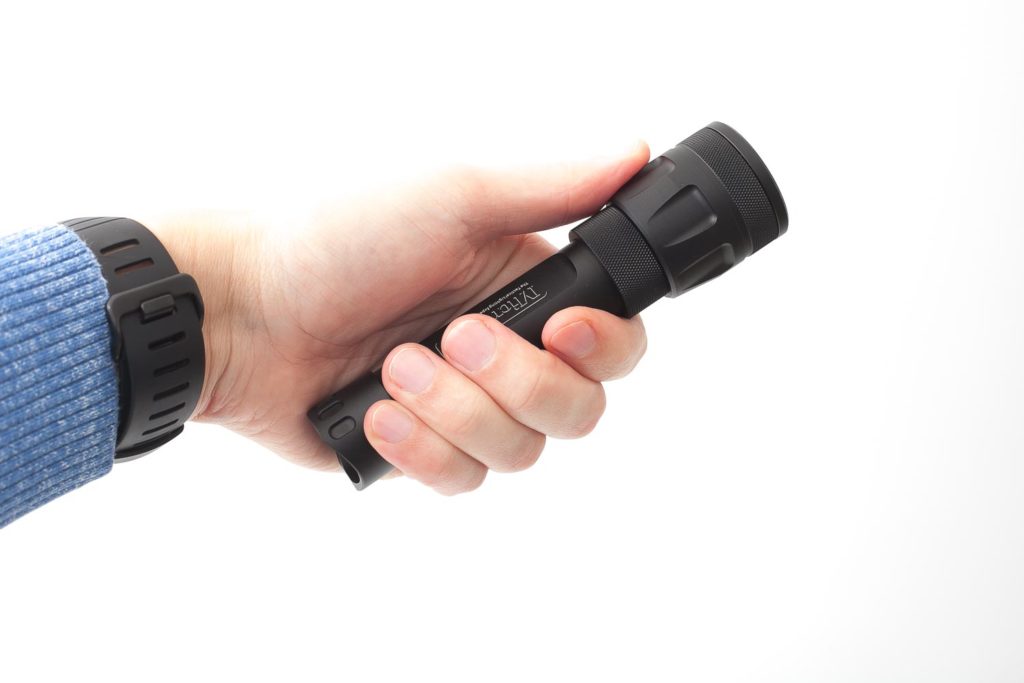
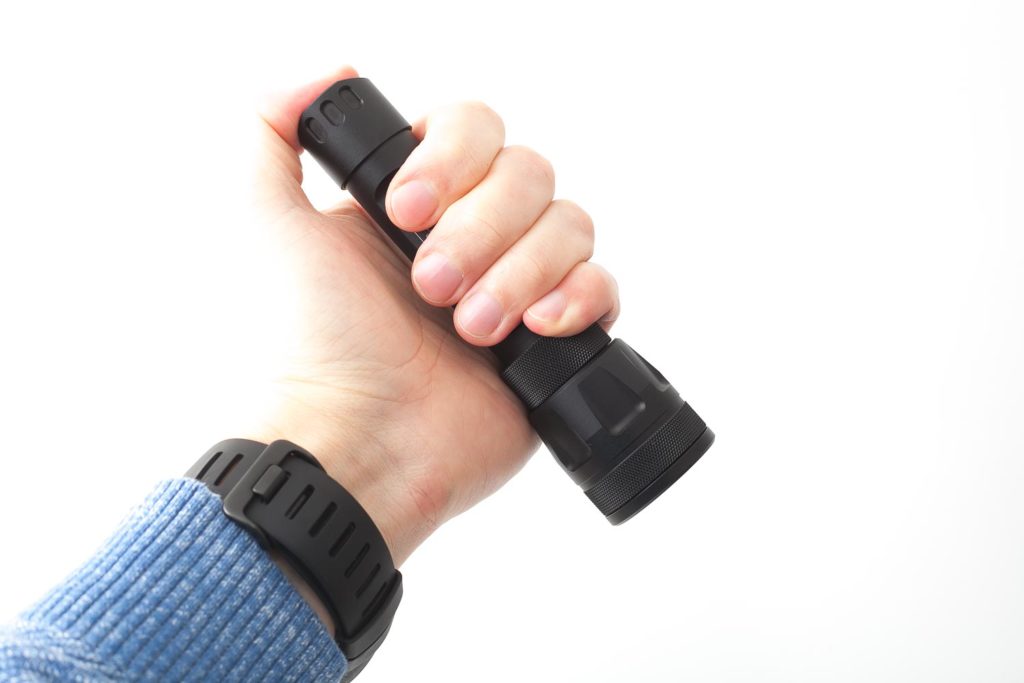
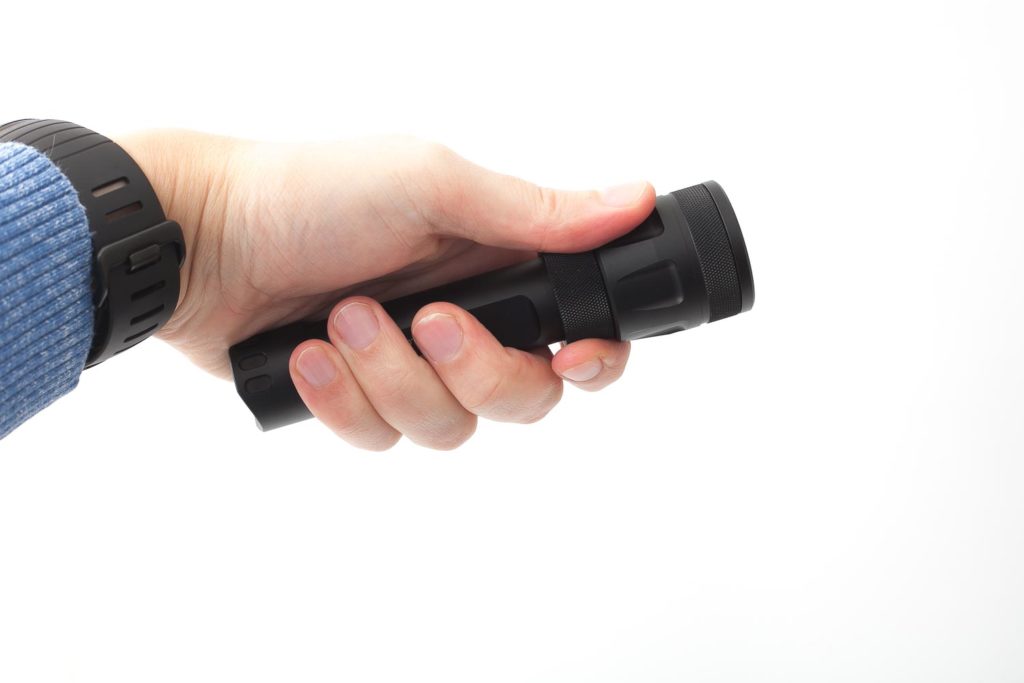
Build Quality, Knurling, Threads, and anodization
The Excalibur H20 surprised me quite a bit by the build quality. The H8 is a much smaller light, but doesn’t feel cheap in any shape or form. It doesn’t have the same ‘feeling’ but it’s definitly not bad at all. The machining is very smooth without any sharp edges or corners, and the materials used are of aerospace-grade aluminum alloy. The coating is a HAIII military-grade hard-anodized finish.
I don’t know how to test or prove it, but it definitely looks high quality and durable.
Threading can only be seen near the tailcap. Within 4 turns is the tailcap unscrewed and the driver seems to be in the tailcap.
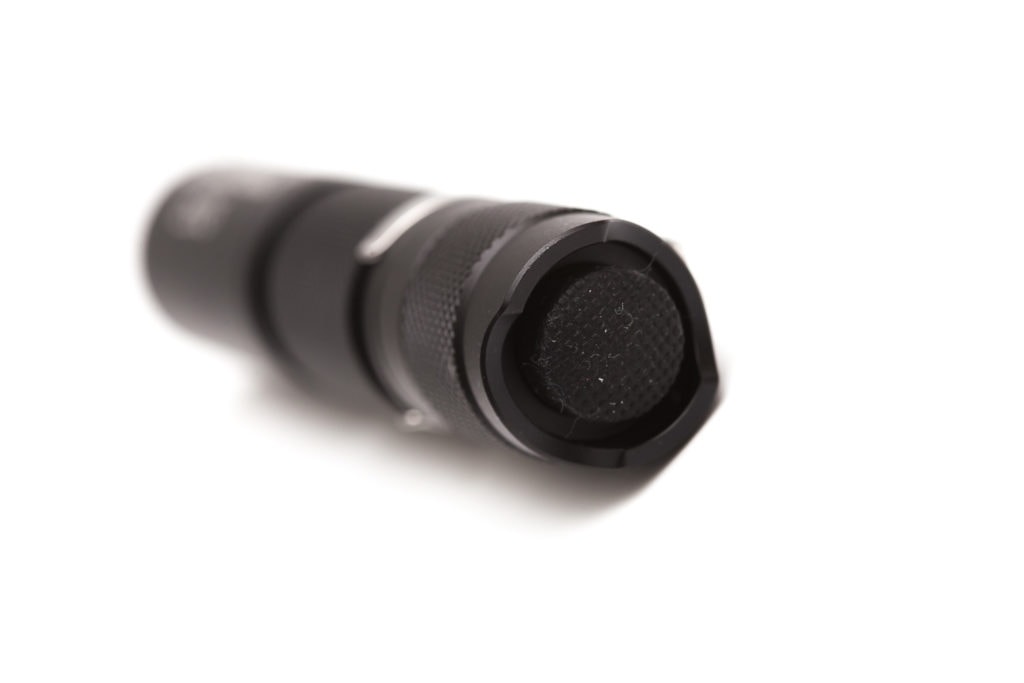
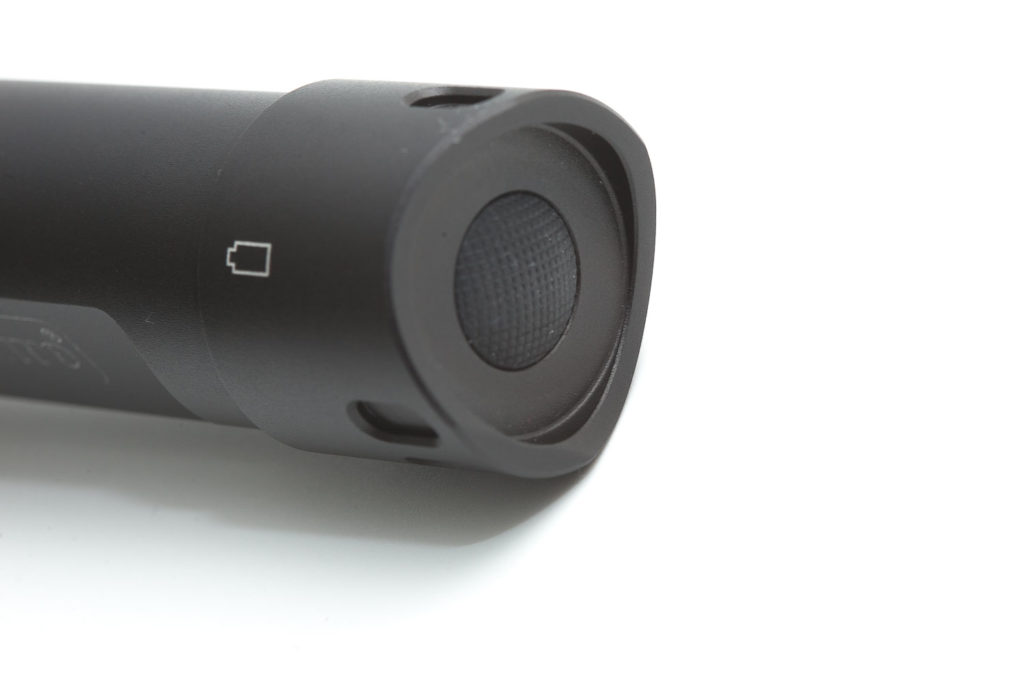
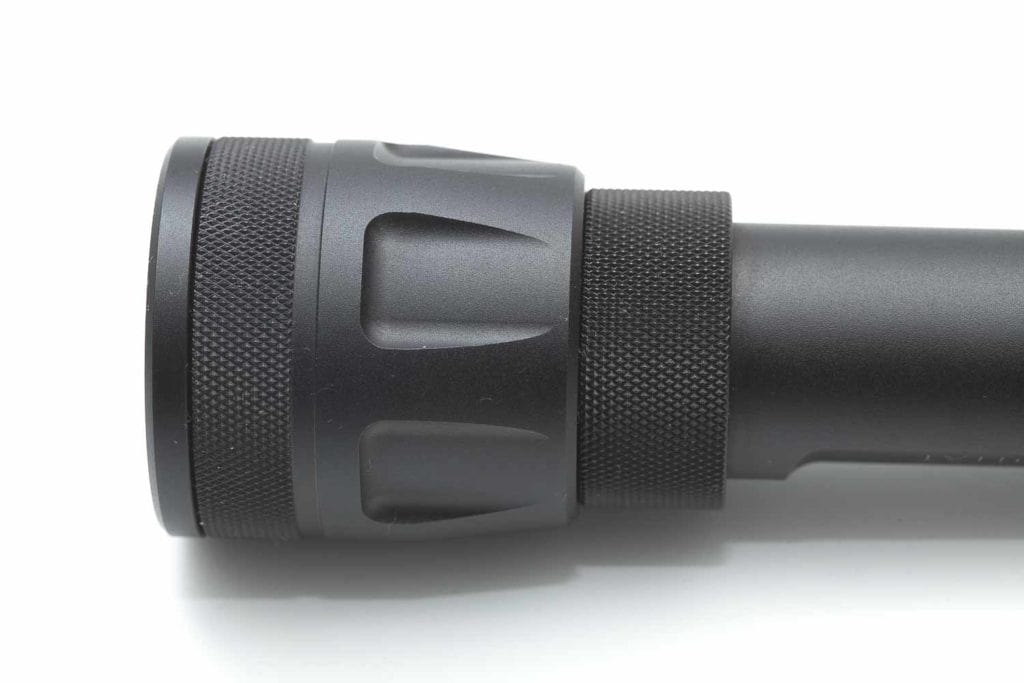
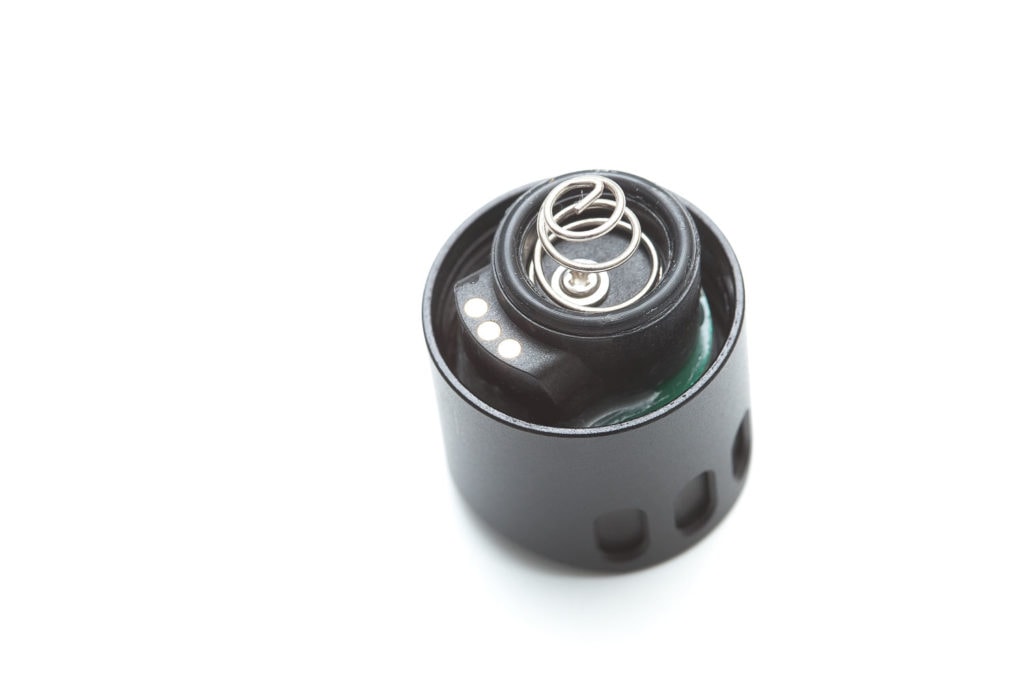
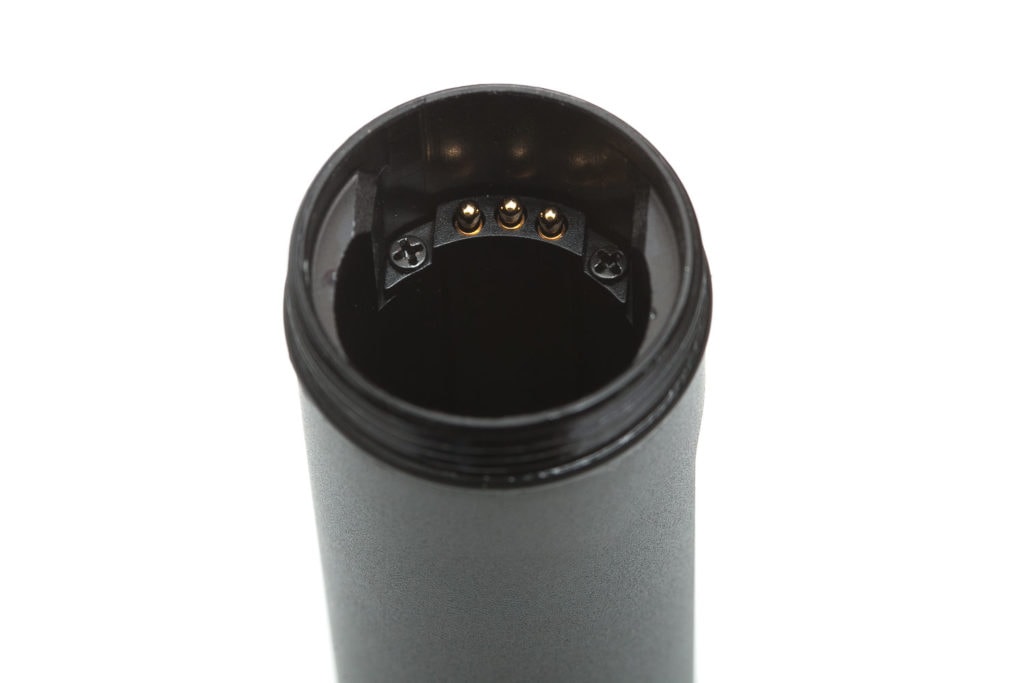
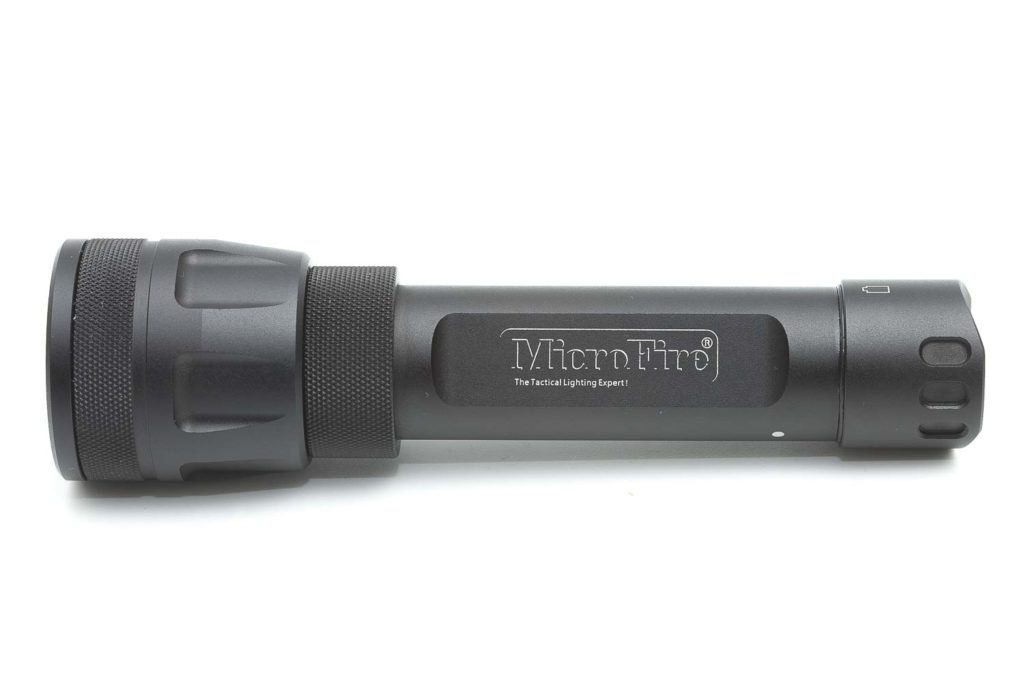
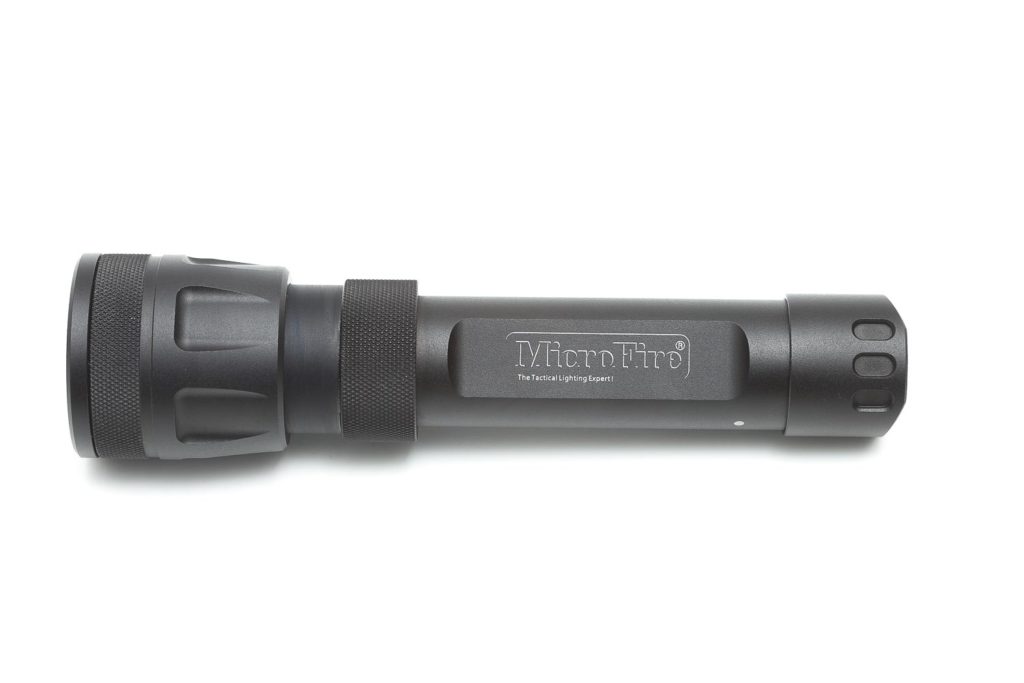
LED, LENS, BEZEL, AND REFLECTOR
Nor the website, nor their online store mentions the type of LED used in the H8. But to me, it looks like they used the OSRAM KW CSLNM1.TG LED, just like its bigger brother, the Excalibur H20. The zoom system also has some sort of wavien collar, that keeps the light from shattering inside the light that reduces the output.
In the Performance section I will talk about the effectiveness of this type of system. It really helps with reducing the loss of light. Great stuff :–))
Because it uses a convex lens, it doesn’t have a reflector. The lens focuses the beam to as narrow as you want. The beam divergence is between 2.4 – 24 degrees. 2.4 degrees is very narrow. But in real life it’s still not as narrow as it sounds. Take a look at the beamshots at the bottom of the review.
The bezel isn’t glued so you can remove the bezel and the convex lens to reach the inside. The ‘wavien collar’ is glued in place, so you can’t really get behind it.
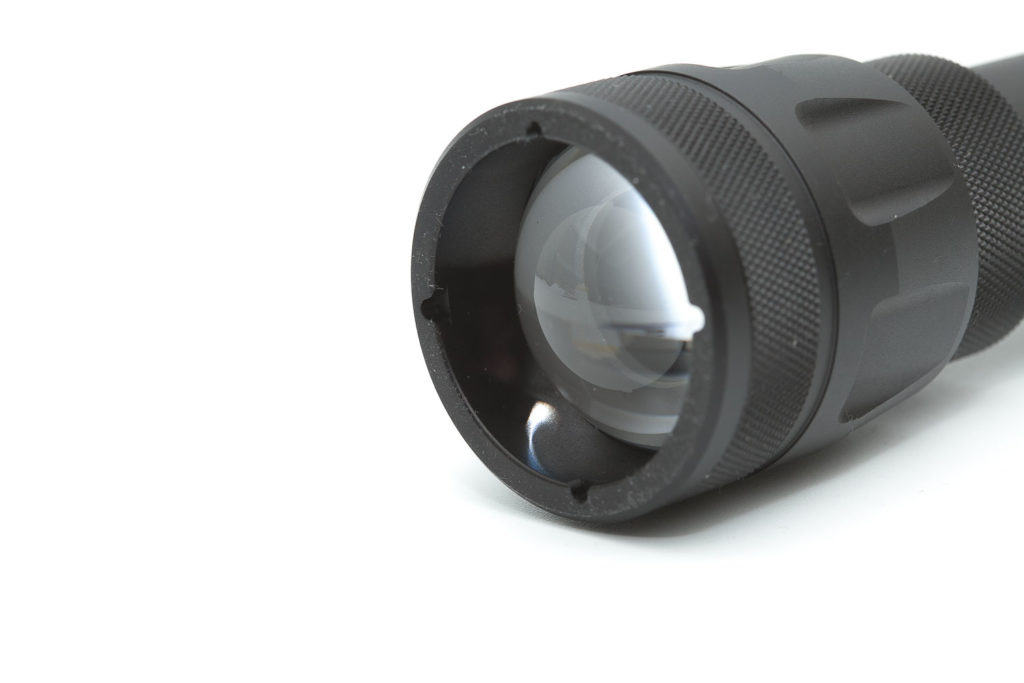
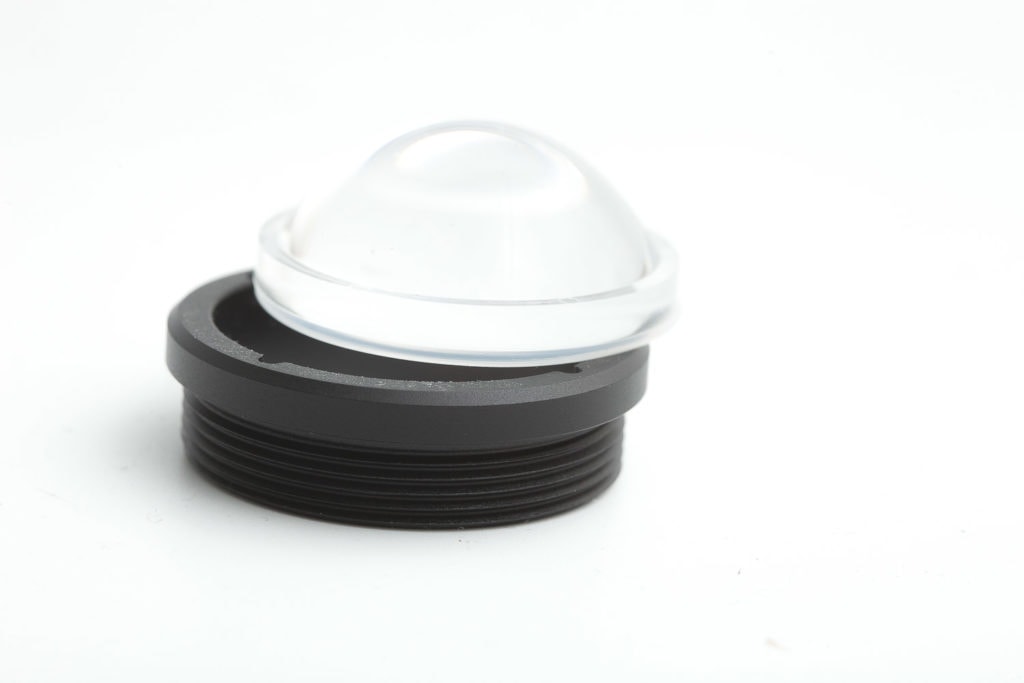
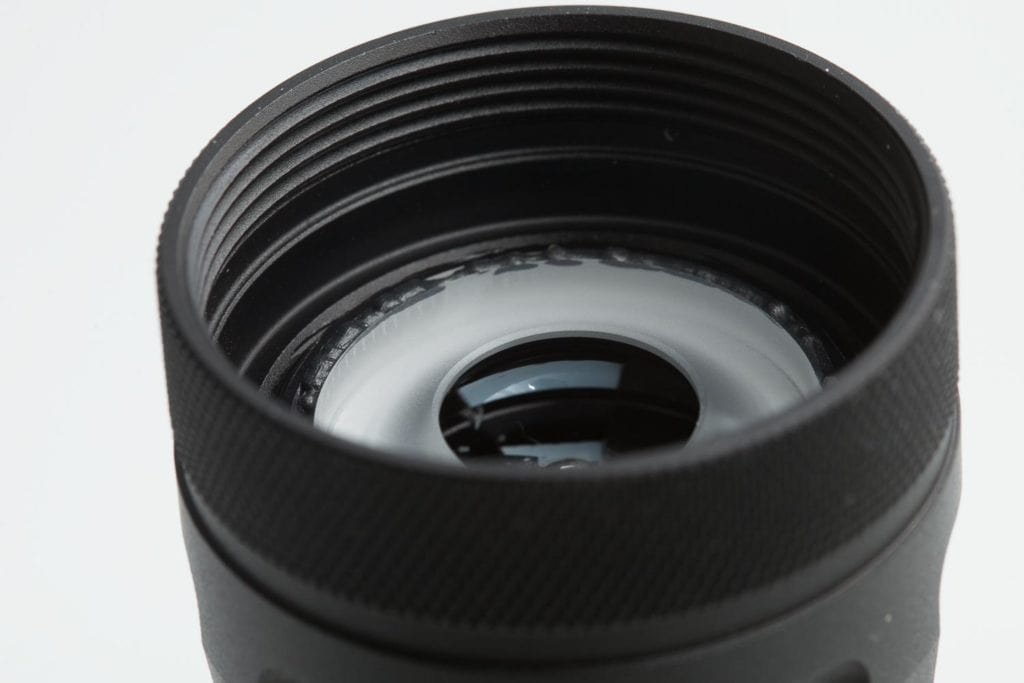
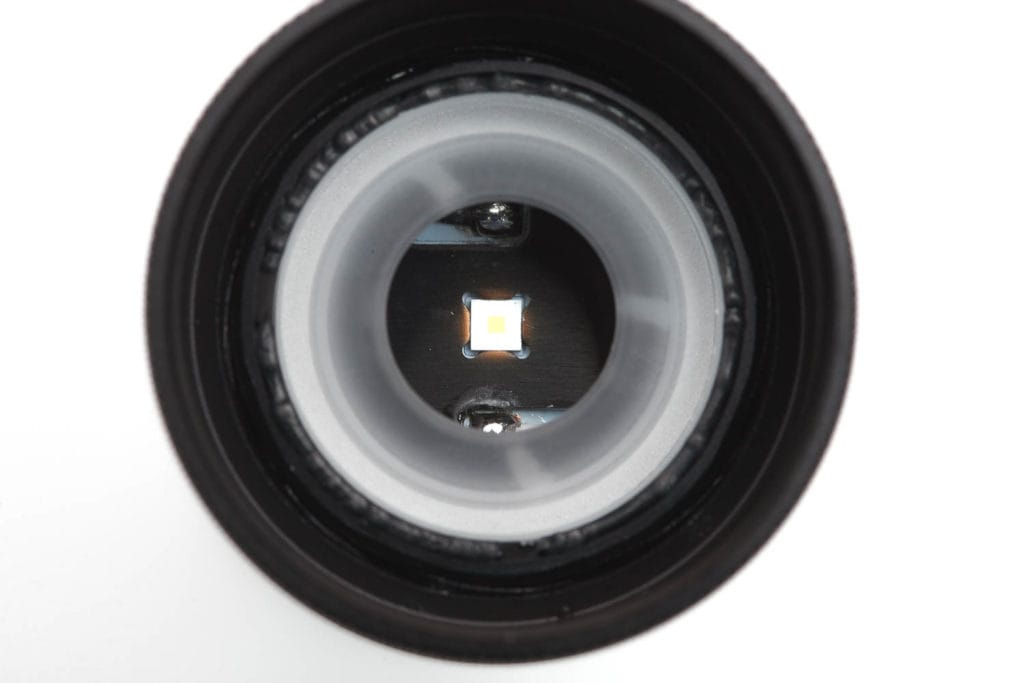
Dimensions
- Length: 150.9 mm / 5.94 ”
- Head diameter: 40 mm / 1.58”
- Body diameter: 25.5 mm / 1 ”f
Weight:
- Empty: 151.7 g / 5.35 oz
- With battery: 197.8 g / 6.98 oz
Long-range flashlight comparison
Below is the Falcon H8 compared to other thrower flashlights.
From left to right: Lumintop GT Mini, Boruit C8, MicroFire Falcon H8, Astrolux FT02, Astrolux FT03
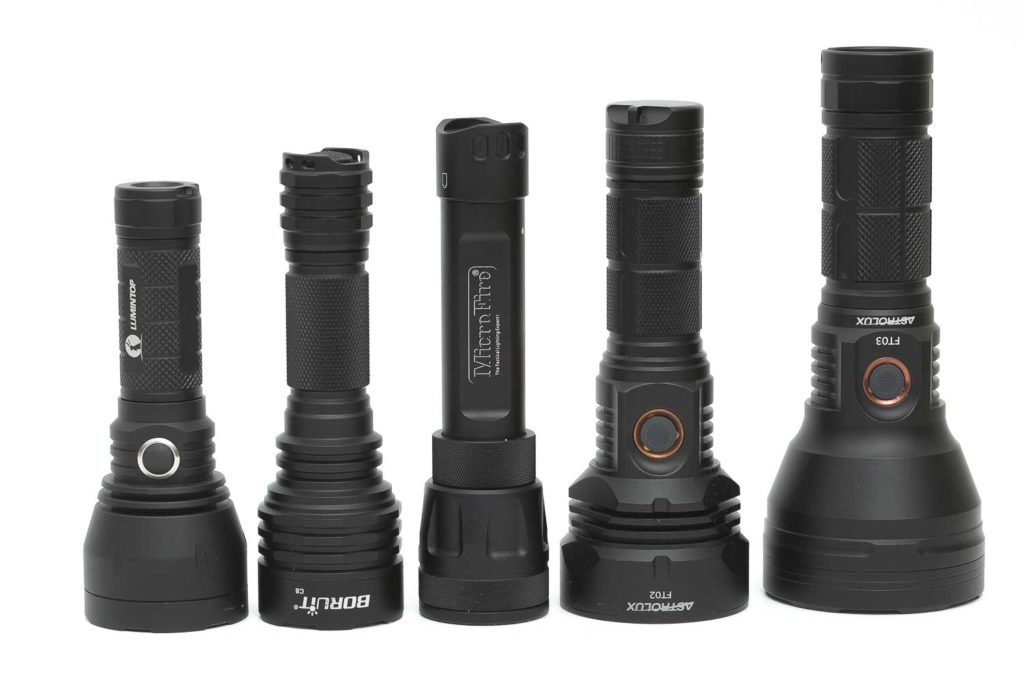
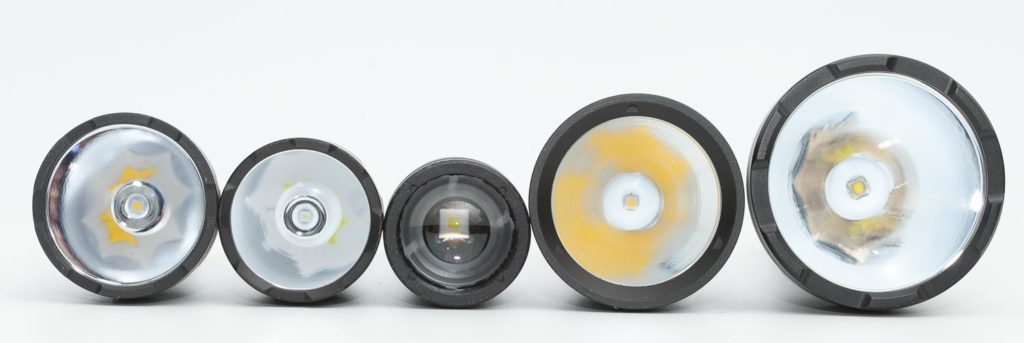
Driver & User Interface:
The driver is… interesting. It’s using the same user interface as the Excalibur H20.
Available modes:
- On, Strobe + ramp 1-50%
Ramping configuration:
- Ramping starts directly when you press and hold the switch to activate Low. When you are in Low for a few secondws, you cannot change its brightness anymore. You’d have to turn the light off again to start ramping.
From OFF:
- Single-click: On (High mode)
- Double click: nothing, just turns off again
- Press and hold 2 seconds and release: Strobe
- Press and hold 4 seconds without release: Low (start of ramp)
From ON:
- Half-press: Cycle through the menu from Low to High
- Single-click: (to last used mode, mode memory)
- Double click: N/A
- Press and hold <4 sec: Off
- Press and hold >4 sec: Low (bottom of ramp)
Mode memory:
- No, always start in High. I would have preferred if the Ramping mode could be memorized. That way you would have High + desired output. Now you have to start ramping from Low, until you reach the desired output. Next time you turn the flashlight on again, you have to start from Low again, because it doesn’t have memory.
Blinky modes menu:
- Strobe. It can only be activated from Off. Press and hold for 2 seconds and release the switch: it will activate Strobe. If you keep pushing it, without releasing, it will just go to Low.
Low battery warning:
- No warning
Lock-out mode:
- No. You can do a mechanical lockout by unscrewing the tailcap 1.5 turns. This is because the way the tailcap is made.
PWM:
- Yes it does, in ramping mode.
Firmware / UI Conclusion:
Although I like the idea of a ramping menu, I personally don’t think it’s very useful. I would have preferred to have mode memory for the 2nd mode. The second mode should have been activated from High, and only Low from Off. That way you have actually 3 useful modes, or remove the Low mode altogether and use the 2nd mode instead.
Batteries & Charging
Mine didn’t arrive with a charger, but from the manual I can see that an 1A charger is normally included. Or at least, that is what it looks like. It does accept button tops, flat tops, protected and unprotected cells.
Performance
Lumen measurements:
All output numbers are relative for my home-made Integrating Sphere. It is set up with an Extech SDL400 Lux Meter for measurements including a Kenko PRO1D ND-16 filter. The base measurement is done with a Convoy S2+ that has been tested at 255 lumens.
All of my readings were taken from a Samsung 30Q battery.
| Mode | measured after 30 sec. | @ start |
|---|---|---|
| High-wide beam | 328 | 331 |
| High narrow beam | 310 | 313 |
| Low-wide beam | 4.03 | 4.03 |
| High-narrow beam | 4.03 | 4.03 |
When you compare 331 lumens to 313 lumens from Wide beam to Narrow beam (flood vs throw). The difference is only 5.4% (I used the lumens measurement with decimals for the calculation). That is pretty good in my opinion. I’ve seen worse than that.
Runtime:
The runtime test was done with the 50cm integrating sphere, including the Kenko Pro1D ND-16 filter and Extech SDL400 data logging Lux Meter. But with a multiplier for candela (using the Lux measurements).
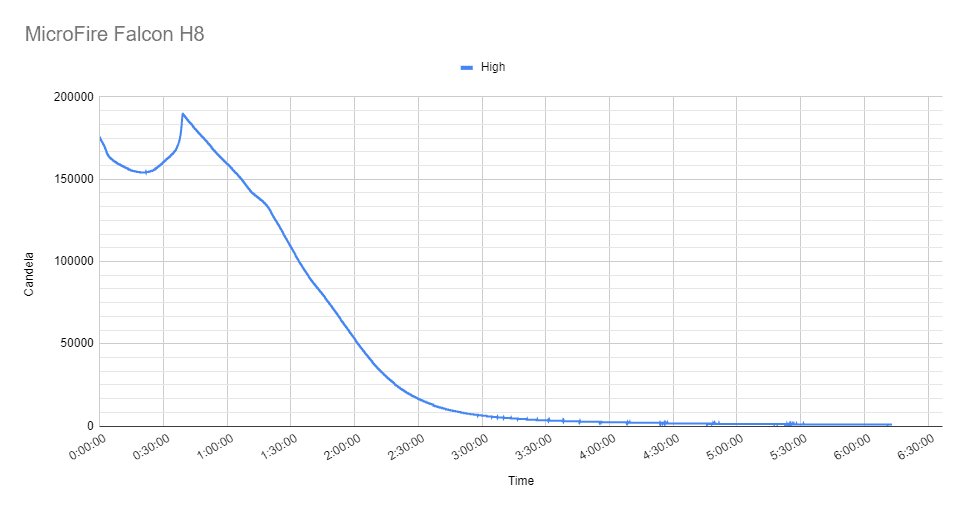
The battery was at 2.62V when I stopped the runtime test.
Throw Measurement
Measurements were taken outdoors at 20 meters with a professional Hagner E4-X Lux Meter.
I’m pretty sure you can get higher with focusing the beam to the best. This means not turning the head till the end, but slighly back.
| Mode | Measured cd | Meters | Yards | Miles |
|---|---|---|---|---|
| High | 176000 cd | 839 m | 918 yd | 0.52 |
According to MicroFire’s latest released specifications, it is suposed to reach 202 kcd (202,000 cd) (in their store), while the older data (on their official website) showed 160 kcd. I think you can reach 202 by finetuning it a bit more.
Beamshots
The shed is about 65 meters away, and the fence in the first picture is about 200+ meters away.
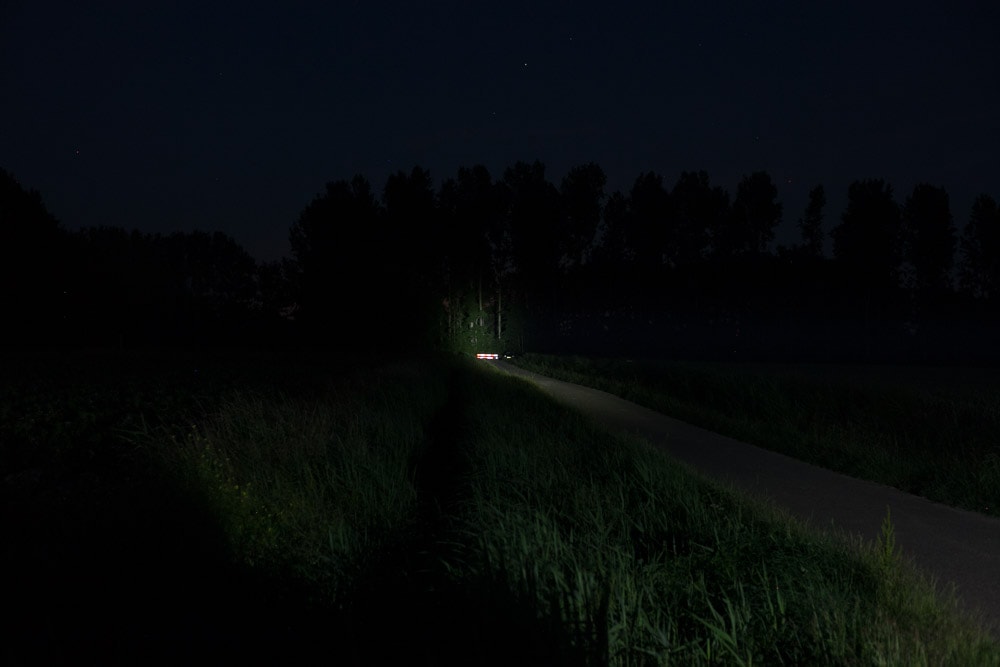
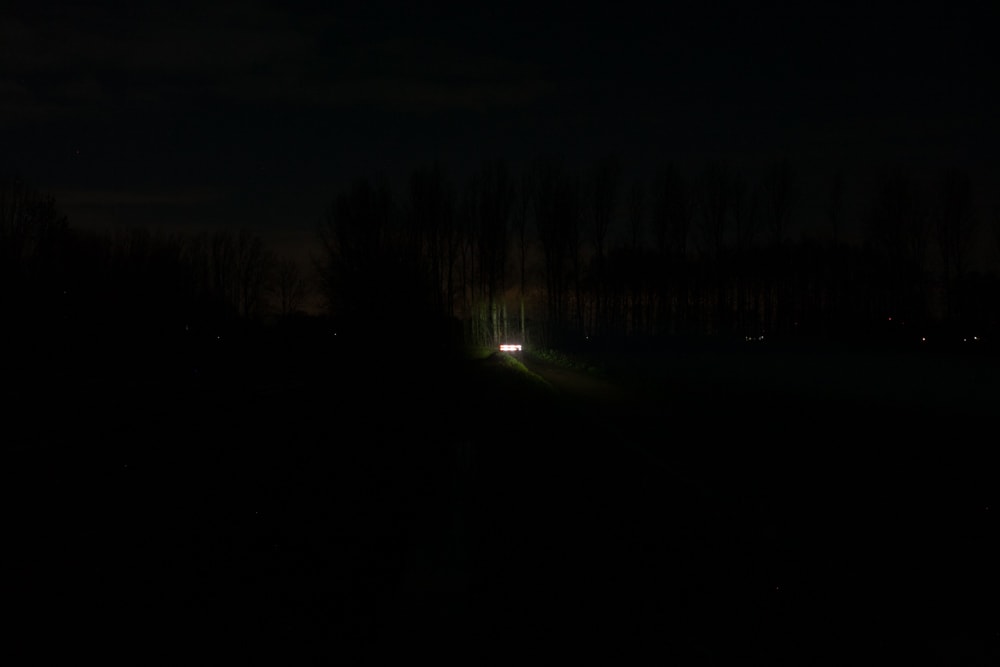
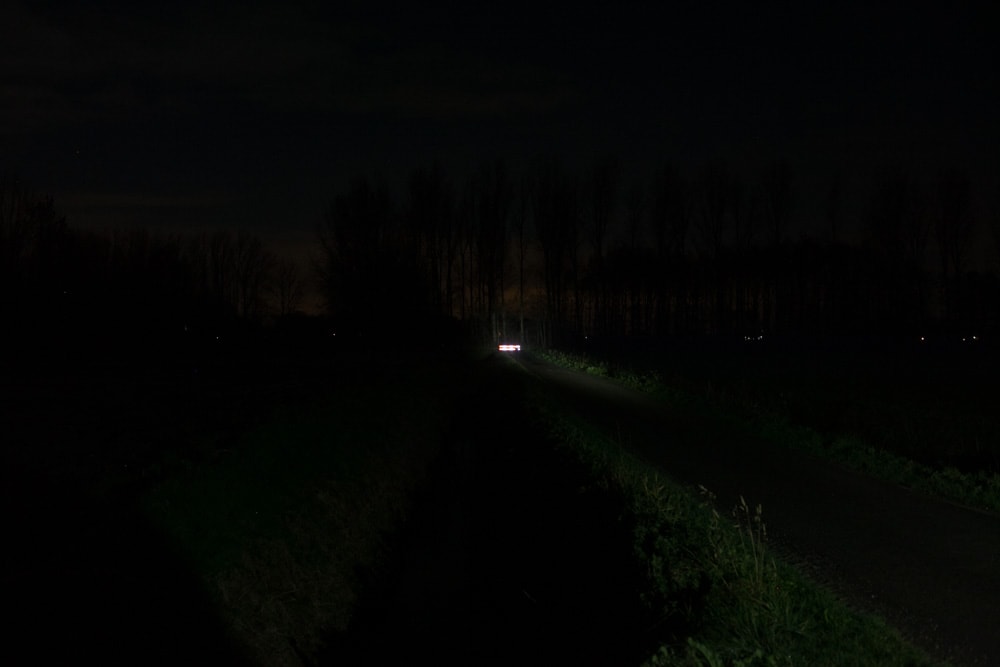
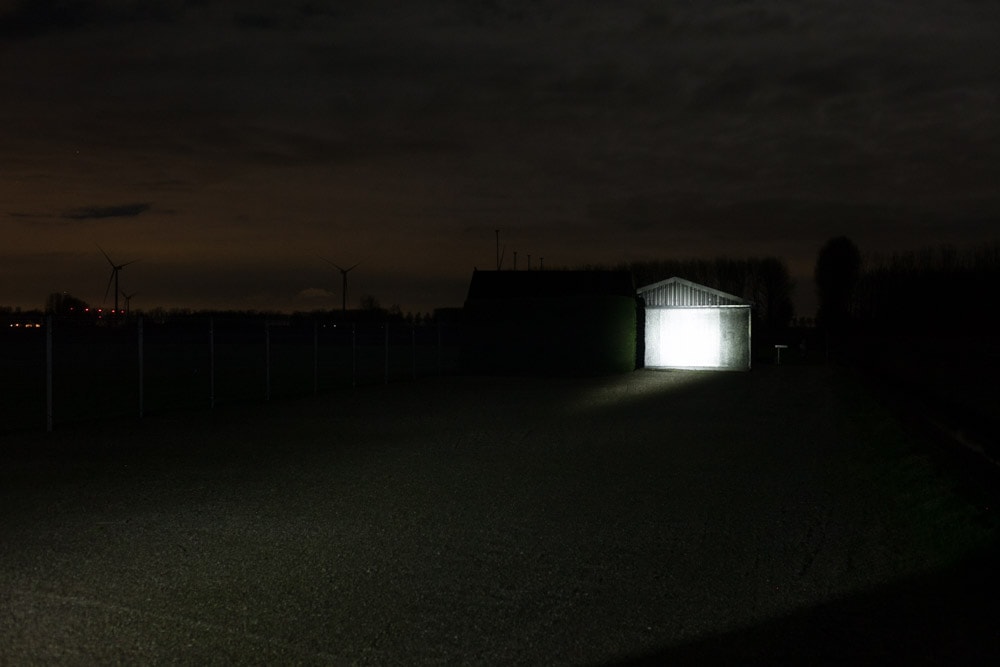
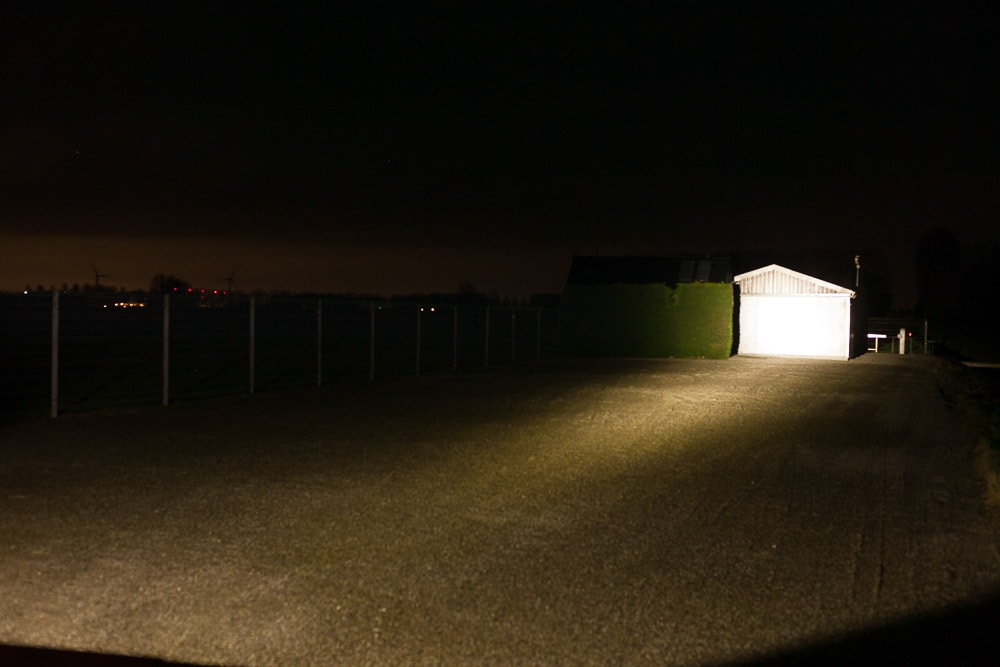
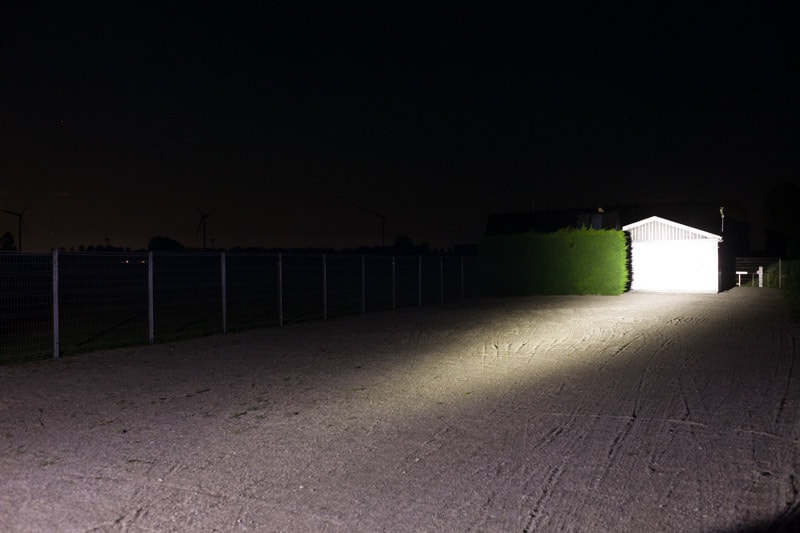
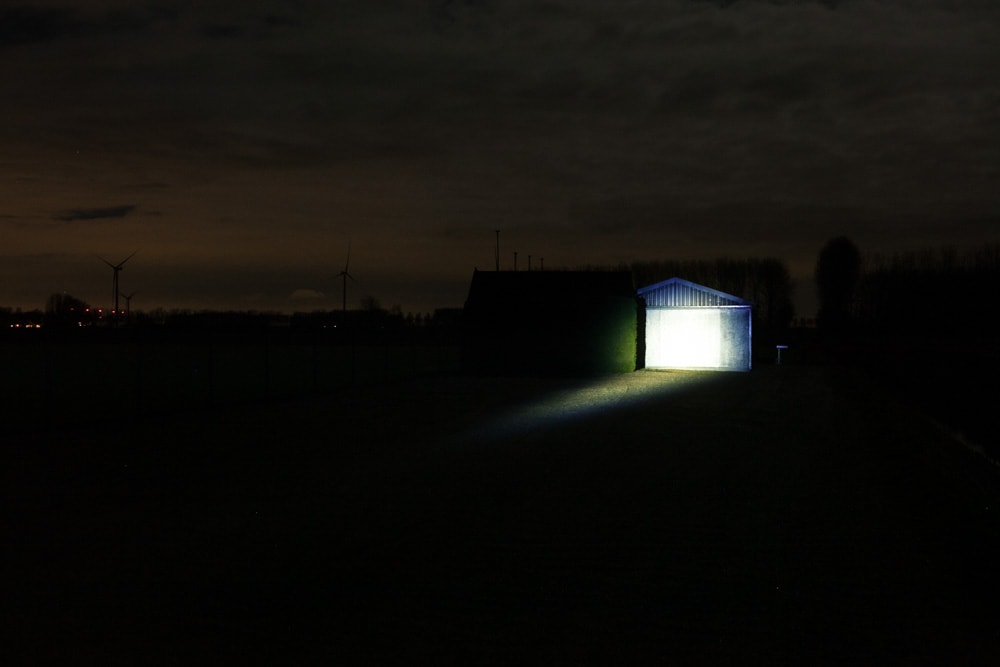
Disclaimer: This flashlight was sent to me for review at no cost, by MicroFire Systems. I have not been paid to review, nor have I been holding back on problems or defects.
OVERALL CONCLUSION
PROS
- Throws very far for the size! (probably one of the farthest-reaching in this category)
- High quality
- Runtime
- Twist focus instead of a push-pull focus
Cons
- UI: ramping doesn’t have memory
- PWM in ramping modes.
- The switch is difficult to operate without using the tip of your thumb or finger
- Price

4 stars: ★★★★
If you like zoomies, and you are looking for a high quality zoomy that can reach extremely far and has a neglectable amount of loss of light when focusing (just 5%), the MicroFire Falcon H8 is probably your best bet. It is relatively expensive compared to other light this size, but you get one of the farthest throwing flashlights in its category. The same con I had with its bigger brother, lack of mode memory for the second mode would have been nice. But the switch is another con I would like to see changed. The ramping feature is already there, we just need to lock it in. Mine reached easily 176 kcd, and if you finetune the focus a bit more, you can likely reach 200 kcd+.
MicroFire Falcon H8 info
Microfire decided to close their online store. You can still see details on their company website below:
1lumen selects and reviews products personally. We may earn affiliate commissions through our links, which help support our testing.